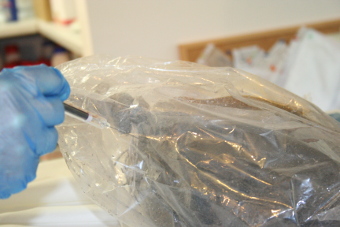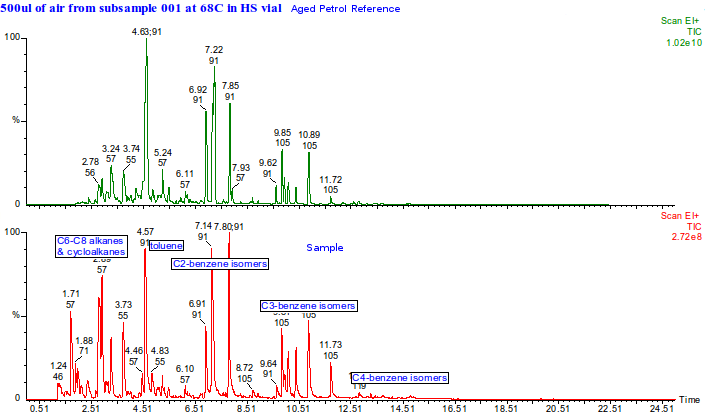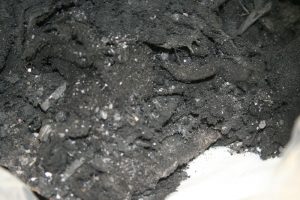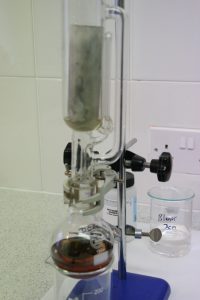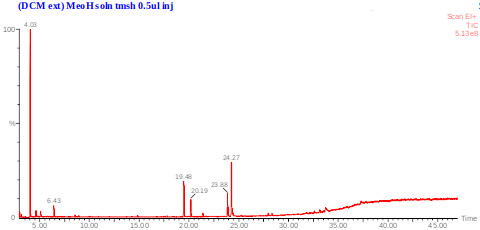Detection and identification of accelerants in fire debris.
We are able to look for traces of common accelerants (petrol, white spirit, kerosene) in the remaining debris from domestic and industrial fires. Insurance investigators provide us with samples from the scene of the fire which must be placed in relatively impermeable nylon bags as well as employing a Swan Neck closure technique. We can use adsorption techniques to maximise the chances of finding traces of accelerants
It should be noted that even when samples are placed in nylon bags and the correct technique is used to tie-off the neck of the bag, some losses of the more volatile molecules will occur. In our own experiments we have shown that after some hours at room temperature migrated volatiles can be found within a secondary, outer, nylon bag and so the amount of time between sampling and our analysis is critical to maximise the chances of conclusive evidence being found. Fortunately, with appropriate notice, we can work with you to get the analysis started on the same day as the receipt of samples.
Detection of ‘self-heating’ oils in fire debris and laundry
We can identify self-heating oils (also known as drying oils) in fire debris and laundry. This has become something of a ‘hot topic’ over recent years. One reason is likely to be the use of lower temperature machine washing cycles, driven by the desire to minimise ecological impacts. In doing so, there will be a greater chance of there being residual oils on fabrics which are then being heated in the drying phase. The autoxidation of drying oils is also more likely when a tighter bundle of material is made; such is the case when overloading a tumble drier or combination washer/drier machine.
Insurance investigators and manufacturers use our consultancy and analysis services and we can often provide a rapid turnaround time.
Detection of smoke taint chemicals and PAHs
We can determine evidence that there has been exposure to smoke in a variety of materials such as grains, grain derivatives, vegetables and clothing. Typically this results in contamination by characteristic phenolic compounds related to smoke taint and polycyclic aromatic hydrocarbons.
For more background on fire analysis see Wikipedia article
Please contact us for a specific quote for any of these analysis.

